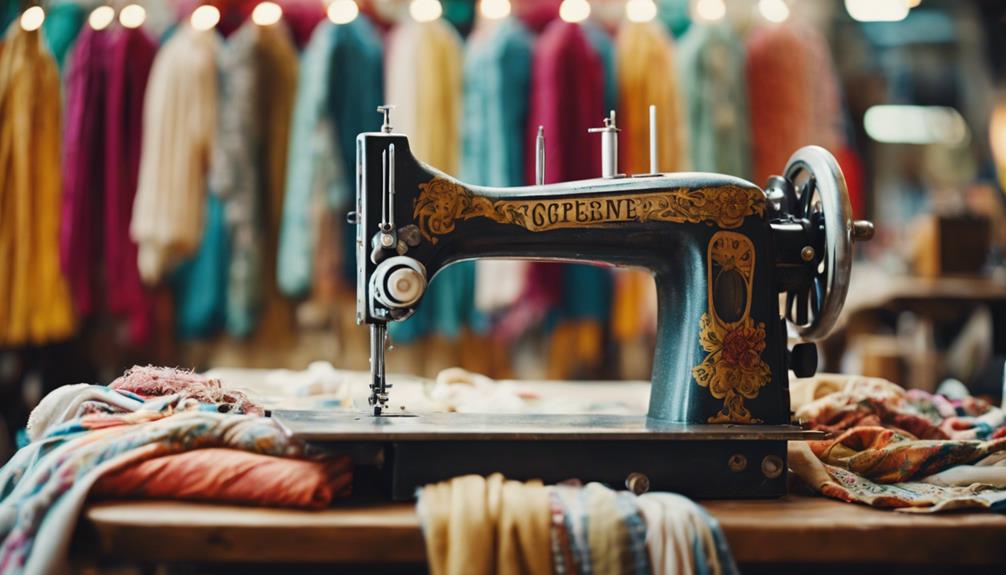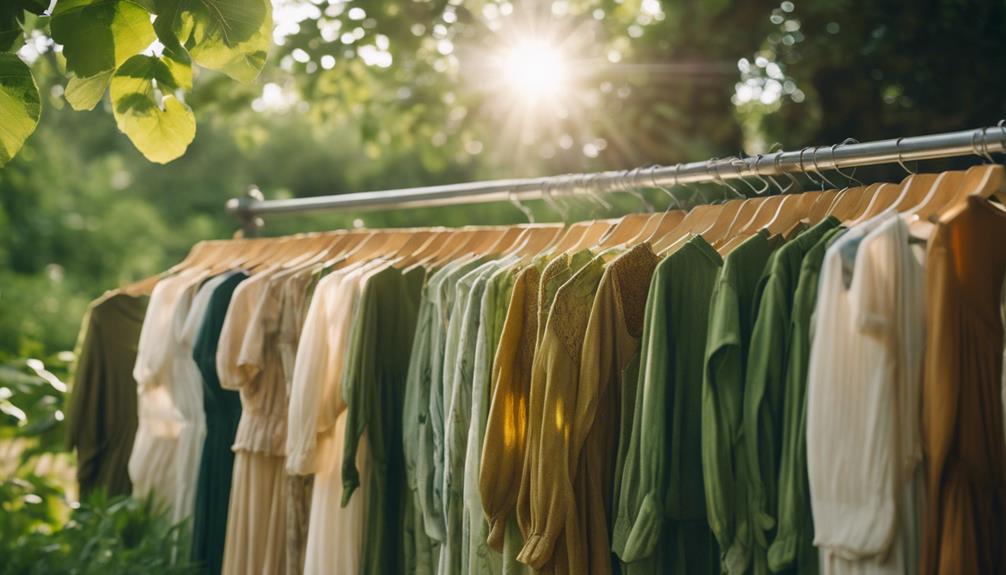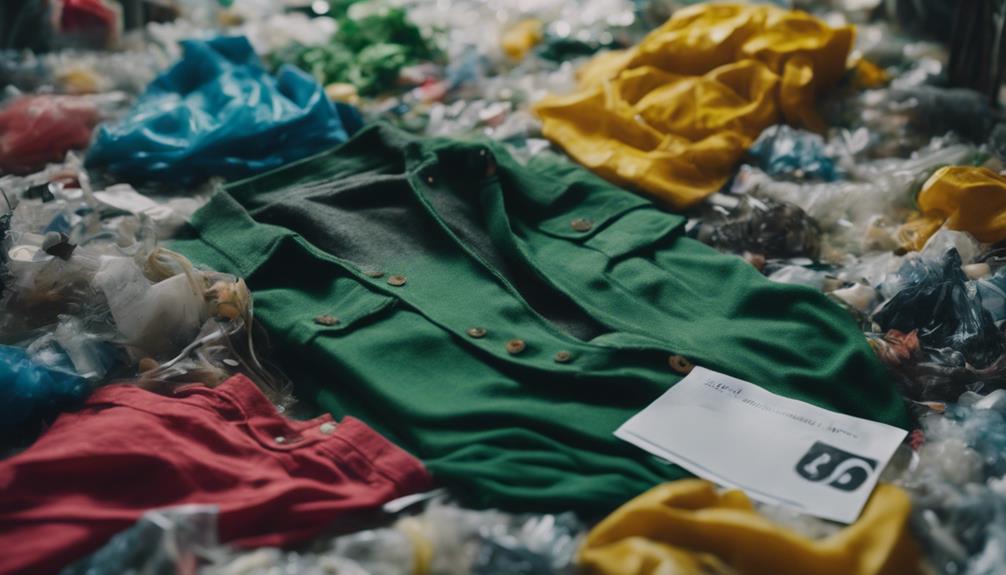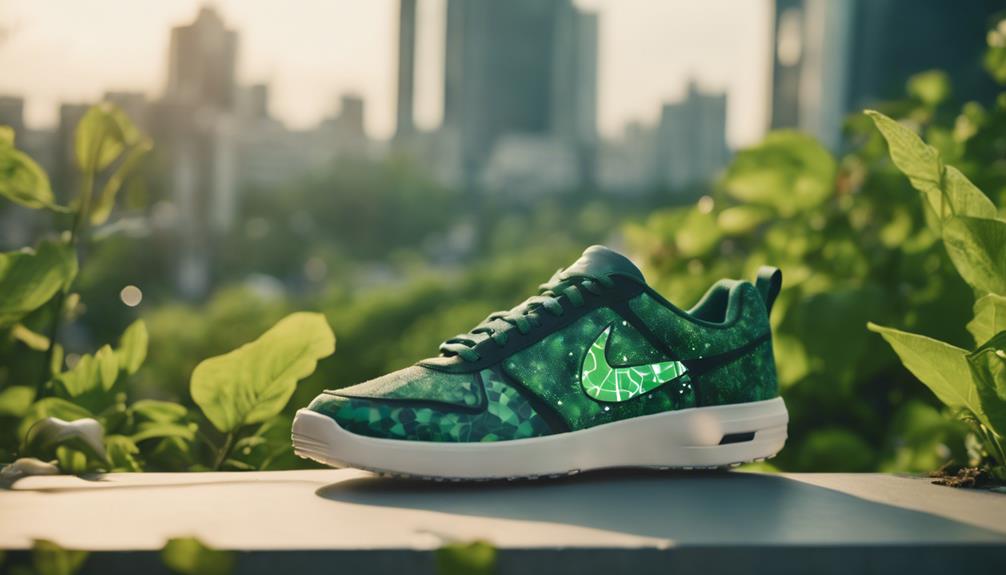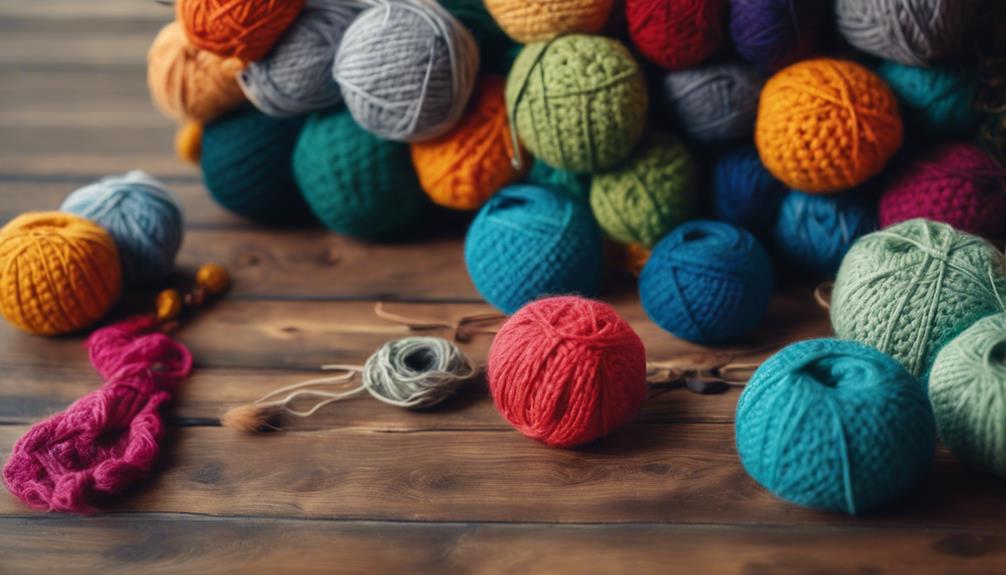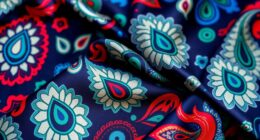Green fashion was born out of a need to address the damage caused by the Industrial Revolution on the environment. Its roots go back to the 1960s and 70s during the counterculture movements, which promoted environmentally friendly practices. The term “sustainable fashion” came into existence in 2007, taking inspiration from the slow food movement. Events like the Nike factory scandal in 1991 and the Rana Plaza disaster in 2013 served as wake-up calls for consumers, highlighting the ethical aspects of the fashion industry. As a result, companies like Patagonia and Stella McCartney have set new standards for sustainability. Today, there is a rising demand for ethical fashion, leading to a future where morals and trends coexist harmoniously. Dive deeper into this fascinating world of sustainable fashion!
Key Takeaways
- Sustainable fashion originated during the Industrial Revolution, highlighting the environmental impact of mass production and consumerism.
- The counterculture movements of the 1960s and 70s promoted eco-friendly practices and natural materials in response to environmental concerns.
- The term 'sustainable fashion' was coined by Kate Fletcher in 2007, inspired by the slow food movement advocating for responsible consumption.
- Major events like the 1991 Nike factory scandals and the 2013 Rana Plaza disaster spurred global awareness of ethical labor practices in fashion.
Historical Origins of Sustainable Fashion
Sustainable fashion's roots stretch back to the Industrial Revolution, when the shift to mass production sparked awareness of its environmental consequences. You mightn't realize that this era marked the beginning of a sustainable fashion movement, as people started noticing the negative environmental impact of the textile industry.
In the 1960s and 70s, counterculture movements further rejected mass production, advocating for eco-friendly practices and the use of natural fabrics.
The term 'sustainable fashion' was coined in 2007 by Kate Fletcher, who drew inspiration from the slow food movement. This highlighted the need for ethical and sustainable practices in the fashion industry.
As consumers became more conscious of their choices, significant events like the Nike factory scandals in 1991 and the Rana Plaza disaster in 2013 brought social and environmental issues to the forefront, prompting discussions about ethical fashion alternatives.
The emergence of fair trade and ethical certifications reflected a growing demand for socially responsible products. These historical milestones set the stage for the sustainable fashion movement we see today, encouraging you to think critically about your fashion choices and their broader implications.
Influential Events and Movements
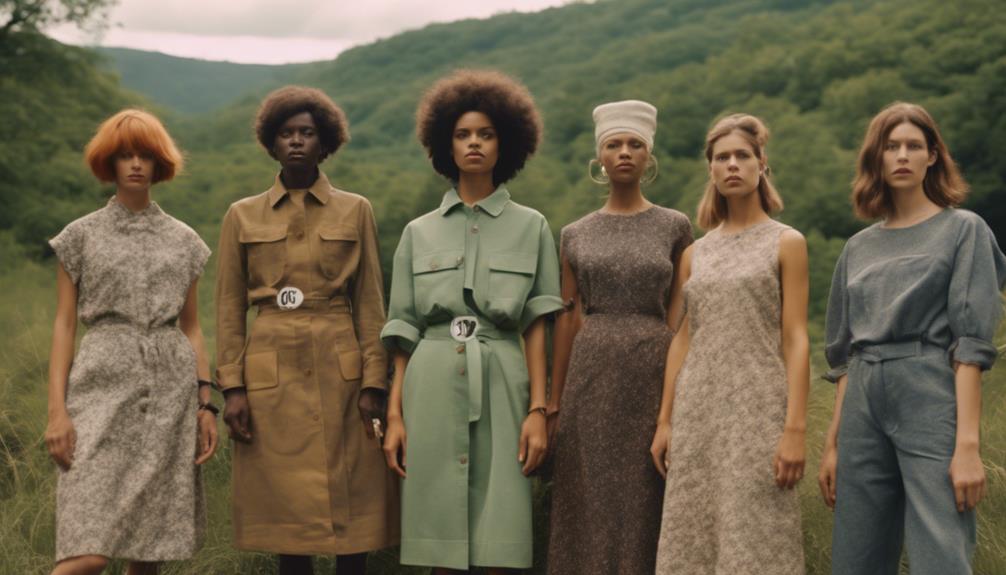
Significant events and movements have shaped the sustainable fashion landscape, driving awareness and change within the industry. The term 'sustainable fashion' emerged in 2007, inspired by the slow food movement, marking a pivotal moment in promoting eco-friendly practices.
However, it was the tragic Rana Plaza disaster in 2013 that truly ignited global awareness. With over 1,100 garment workers losing their lives, the Fashion Revolution movement took off, advocating for ethical practices and transparency in the fashion supply chain.
Earlier, the 1991 Nike low-wage factory scandals highlighted labor exploitation, prompting consumers to demand more ethical alternatives. This shift in consumer consciousness can be traced back to the counterculture movements of the 1960s and 70s, which rejected mass production and embraced natural fabrics and simpler lifestyles. These ideologies laid the groundwork for what we now recognize as sustainable and ethical fashion.
As awareness has grown, key milestones like fair trade certifications have emerged, reflecting a commitment to addressing the social and environmental impact of the fashion industry. Together, these events and movements continue to shape the future of sustainable fashion, urging you to reflect on the impact of your choices.
Key Figures and Pioneering Brands

When you look at sustainable fashion, you'll notice key figures and pioneering brands that have shaped its evolution.
From Hans Carl von Carlowitz's early concepts to Stella McCartney's luxury innovations, these influencers have made a lasting impact.
Let's explore how their contributions and the brands they built have pushed the boundaries of sustainability in the fashion industry.
Influential Brands Overview
Pioneering brands like Patagonia and Stella McCartney have transformed the fashion landscape by prioritizing environmental responsibility and ethical practices. Since its founding in 1973, Patagonia has integrated recycled materials into its production processes, setting a standard for sustainable fashion.
Similarly, Stella McCartney, launched in 2001, has consistently championed the use of organic materials while advocating against animal cruelty in the fashion industry.
Another key player, People Tree, established in 1991, stands out for its commitment to fair trade fashion and transparency in manufacturing. These brands haven't only influenced their consumers but also the industry at large, pushing for innovations like recycled polyester and organic cotton. Their efforts have sparked a shift in consumer expectations, driving demand for sustainable options.
Together, these influential brands have helped shape a movement that challenges traditional fashion norms. By promoting circular economy practices, they aim to reduce waste and extend the life cycle of garments.
As a result, their impact resonates far beyond their collections, inspiring both consumers and other brands to embrace sustainable practices in the fashion world.
Historical Figures Impact
Key figures like Hans Carl von Carlowitz and influential brands such as Patagonia have laid the foundation for sustainable fashion, driving the movement toward ethical practices and eco-friendly materials.
Von Carlowitz, who introduced the concept of sustainable management in 1645, set the stage for modern discussions about sustainability. His early ideas resonate with today's ethos of using resources responsibly.
In the 1990s, brands like Patagonia and People Tree emerged as pioneers in sustainable fashion by utilizing organic cotton and recycled polyester. Their commitment to ethical practices has greatly influenced the industry, showcasing how fashion can have a positive social impact.
The Brundtland Report of 1987 further propelled these ideas into public consciousness, offering a clear definition of sustainability that aligns well with fashion's evolution.
The tragic Rana Plaza disaster in 2013 brought ethical concerns to the forefront, sparking the Fashion Revolution movement. This event heightened consumer awareness and demanded accountability from brands, emphasizing the need for transparency in the fashion supply chain.
These historical figures and brands not only shaped sustainable fashion but also inspired a collective call for change in the industry, fostering a commitment to ethical practices.
Innovations in Sustainability
Innovations in sustainability are reshaping the fashion landscape, with brands like Stella McCartney leading the charge by prioritizing cruelty-free materials and ethical practices since the early 2000s.
Pioneering brands like Patagonia and People Tree have also made significant strides since the 1990s, integrating eco-friendly materials such as recycled polyester and organic cotton into their collections.
The introduction of fair trade and ethical certifications has further elevated sustainable fashion, ensuring that producers receive fair wages and work in safe conditions. This commitment to social responsibility aligns with the increasing demand for transparency in the industry.
Moreover, innovations like bio-based materials and fashion rental services highlight a growing dedication to minimizing textile waste. While these strategies face criticism for not solving all sustainability challenges, they represent vital steps toward a more responsible fashion ecosystem.
As you explore sustainable fashion, it's important to recognize the contributions of these key figures and brands. Their pioneering efforts not only inspire other designers but also encourage consumers to make informed choices that support a more sustainable future.
Embracing these innovations can help shape a fashion industry that values both people and the planet.
Consumer Awareness and Trends

You're likely noticing a significant rise in conscious consumerism as more people become aware of the harmful effects of fast fashion.
This shift reflects a growing desire for sustainable and ethical options, pushing brands to adopt greener practices.
As you explore these trends, you'll see how your choices can impact the industry and the planet.
Rise of Conscious Consumerism
Conscious consumerism is reshaping the fashion landscape as shoppers increasingly demand transparency and accountability from brands regarding their environmental and social impact.
As you become more aware of the consequences of fast fashion, you're likely seeking alternatives that emphasize ethical fashion. This shift aims to address the exploitation of garment workers, who often earn as little as $113 per month, and to improve their working conditions.
The alarming statistic of 17 million tons of textile waste in the U.S. in 2018 serves as a wake-up call for many consumers. You may find yourself prioritizing brands that not only promote sustainable materials but also advocate for fair trade practices. This growing awareness has led to an increase in demand for ethical fashion options, pushing companies to adopt responsible practices.
Legislative actions in Europe and potential bills in the U.S. reflect this change, targeting greenwashing and encouraging genuine sustainability. As a conscious consumer, you're part of this movement, influencing brands to be more transparent and accountable.
Impact of Fast Fashion
Fast fashion's rapid production cycle has sparked a wave of consumer awareness, prompting many to reconsider their shopping habits and seek more sustainable alternatives. You might've noticed that the average person now buys 60% more clothing than they did 15 years ago, leading to a staggering 92 million tons of waste globally each year. This overconsumption is largely driven by brands like H&M and Zara, which produce clothing at an alarming rate, contributing greatly to textile waste.
As awareness of the impact of fast fashion grows, about 70% of consumers express a desire to make more sustainable choices. However, many still grapple with eco-guilt, believing that purchasing recycled items can absolve them of their overall consumption. The fashion industry is responsible for 3-5% of global carbon emissions, highlighting the urgent need for you to rethink your purchasing habits.
Legislative efforts in Europe and the U.S. are starting to tackle the industry's negative impacts, but your behavior as a consumer remains essential for driving change. Embracing secondhand and sustainably produced clothing options can greatly contribute to a more responsible and eco-friendly fashion landscape.
Innovations in Sustainable Practices

Innovations in sustainable practices are reshaping the fashion industry, as brands like Patagonia and Stella McCartney pioneer the use of recycled materials and organic fabrics. These efforts are central to the sustainable fashion movement, promoting ethical fashion choices that resonate with environmentally conscious consumers.
You might notice the rise of fashion rental services, like Rent the Runway, which encourage a circular economy by extending the lifespan of garments and reducing waste. Additionally, innovations in materials include biodegradable fabrics and plant-based alternatives, greatly minimizing environmental impact compared to traditional petroleum-based textiles.
The introduction of fair trade certifications has enhanced supply chain transparency, ensuring workers receive fair wages and work in safe conditions. This not only supports ethical fashion but also builds trust between brands and consumers.
Furthermore, upcycling and repair initiatives are gaining traction, empowering you to transform old clothing into new pieces. This practice reduces reliance on fast fashion and fosters a sustainable mindset. By embracing these innovations, you actively contribute to a more sustainable future in the fashion industry.
The Future Landscape of Fashion

As the sustainable fashion movement evolves, the future landscape of fashion is poised to embrace a more holistic approach that prioritizes ethical practices and circular economy principles.
You'll notice that consumer awareness is driving demand for eco-friendly practices, leading brands to adopt slow fashion strategies. Legislation in Europe and the U.S. is tightening regulations to combat greenwashing and improve labor conditions, ensuring companies are held accountable for their environmental impact.
Innovations in materials, like recycled fibers and organic textiles, are gaining traction. Brands are exploring new business models such as rental and resale, which notably reduce waste. You'll see collaborative efforts across the industry, emphasizing community engagement to foster sustainable practices and educate consumers on responsible consumption.
The future of fashion will focus on systemic change rather than isolated innovations. It's vital to understand true sustainability and shift production and consumption patterns. By supporting ethical fashion and embracing a circular economy, you contribute to a more responsible and environmentally friendly industry.
As you navigate this evolving landscape, your choices will play a key role in shaping the future of fashion.
Frequently Asked Questions
How Did Sustainable Fashion Start?
You'll find that sustainable fashion began gaining traction in the 1990s, driven by a growing awareness of environmental issues and ethical concerns. Pioneering brands and movements shaped consumer demand for responsible and eco-friendly clothing choices.
What Is the Problem With Sustainable Fashion?
Sustainable fashion promises change, yet it often falls short. You see brands greenwashing, recycling without impact, and fast fashion thriving. To truly make a difference, you need to challenge these misleading practices and demand genuine progress.
What Do People Think About Sustainable Fashion?
People often see sustainable fashion as a positive shift, appreciating eco-friendly choices. However, you might feel confused by greenwashing claims and struggle with overconsumption, even while trying to shop more responsibly through thrifting or secondhand options.
Why Most of Fashion Today Is Not Sustainable?
You might think fashion's embracing sustainability, but it's often just a façade. Fast fashion thrives on overconsumption, and many brands greenwash their practices, leaving real environmental issues unaddressed while continuing harmful production methods.
What is the history behind sustainable fashion and how did it start?
Sustainable fashion process explained: The concept of sustainable fashion has its roots in the environmental and social movements of the 1960s and 70s. It started gaining momentum in the early 2000s with the rise of eco-friendly materials and ethical production practices. Today, sustainable fashion is a growing industry focused on minimizing environmental impact and improving working conditions.
Conclusion
Sustainable fashion isn't just a trendy buzzword; it's a movement rooted in history and driven by passionate individuals.
You might think it's too complicated or expensive, but the reality is that small, conscious choices can make a big impact.
By embracing sustainable practices, you're not only helping the planet, but you're also supporting innovative brands that prioritize ethics over profit.
So, immerse yourself in sustainable fashion—your wardrobe and the Earth will thank you!
